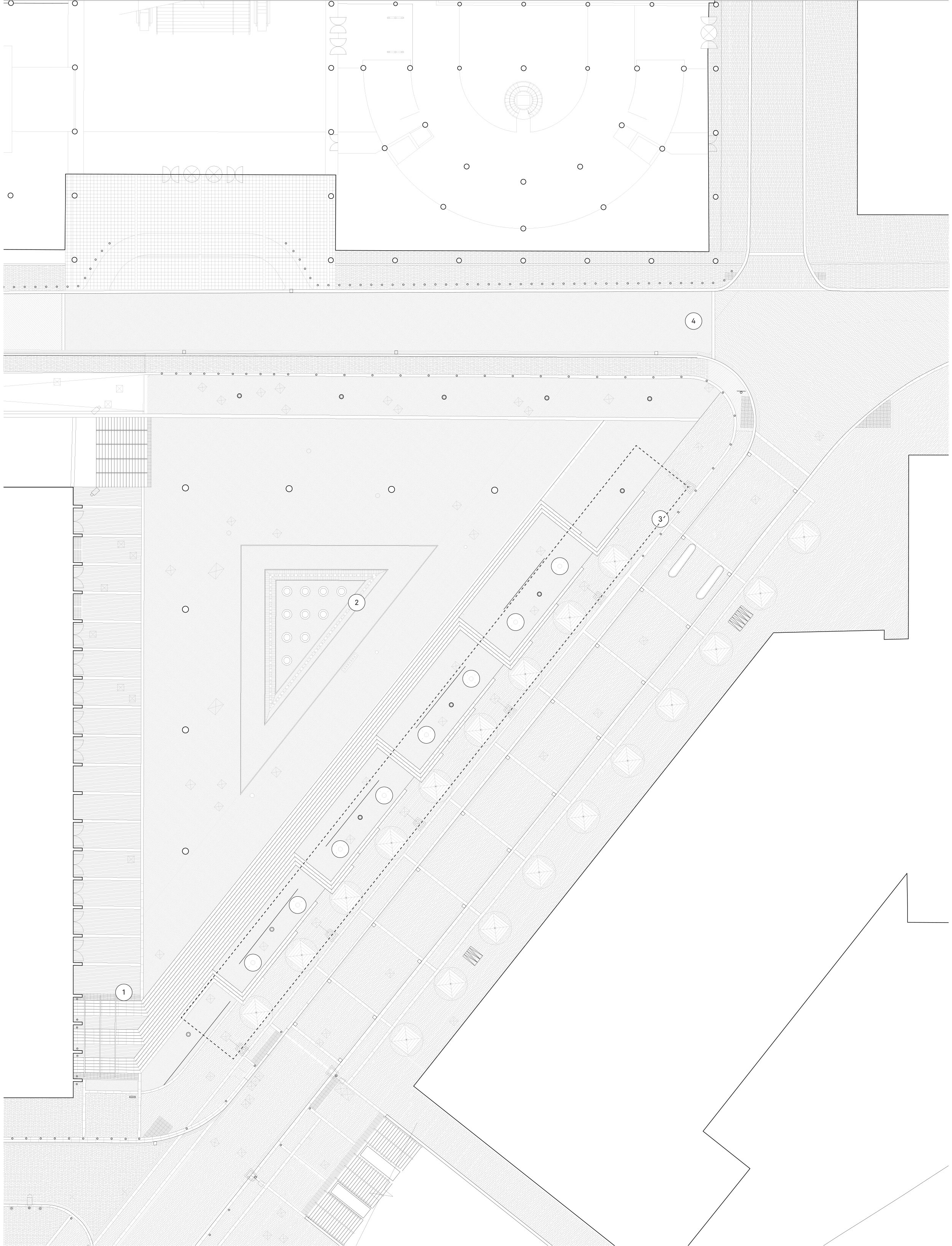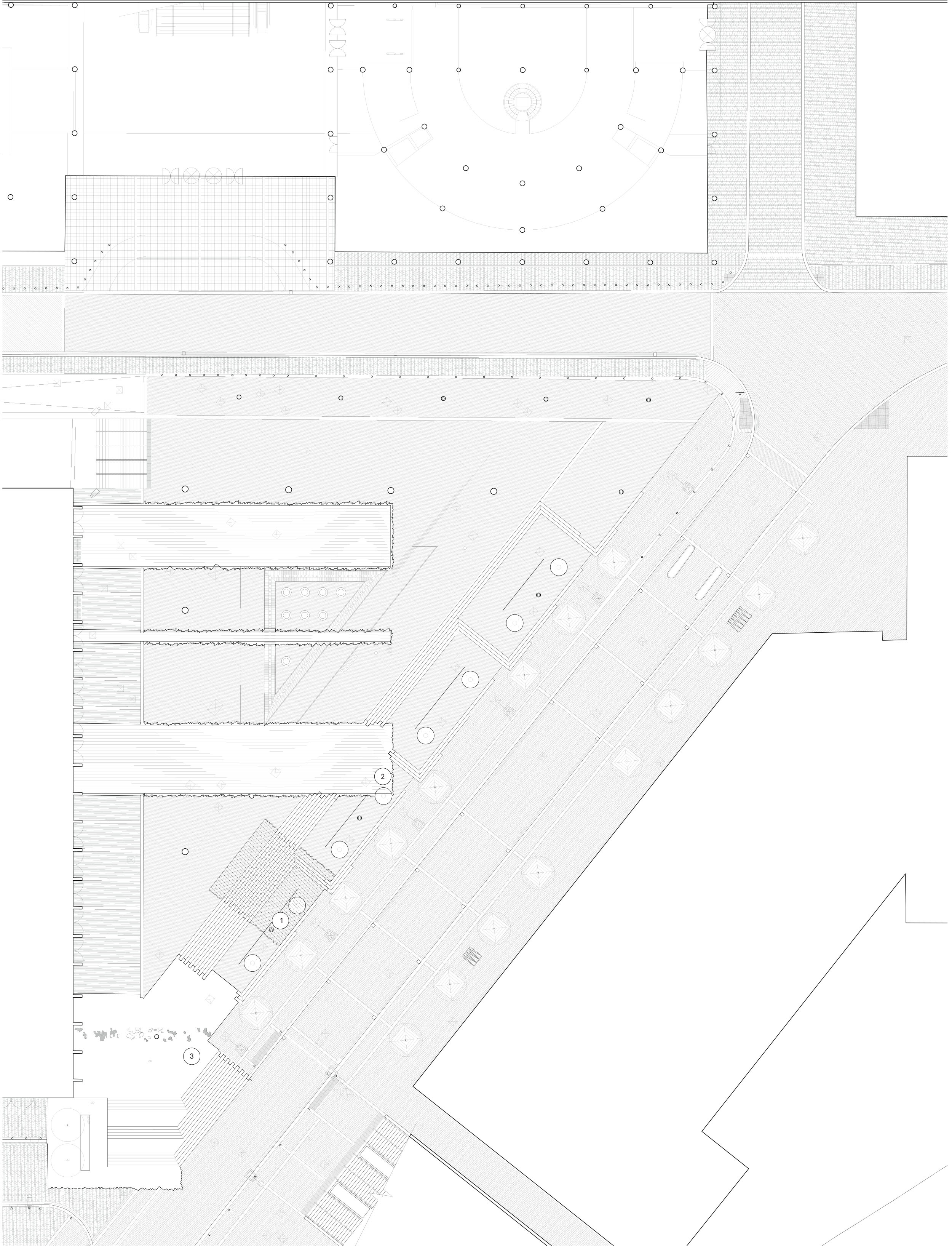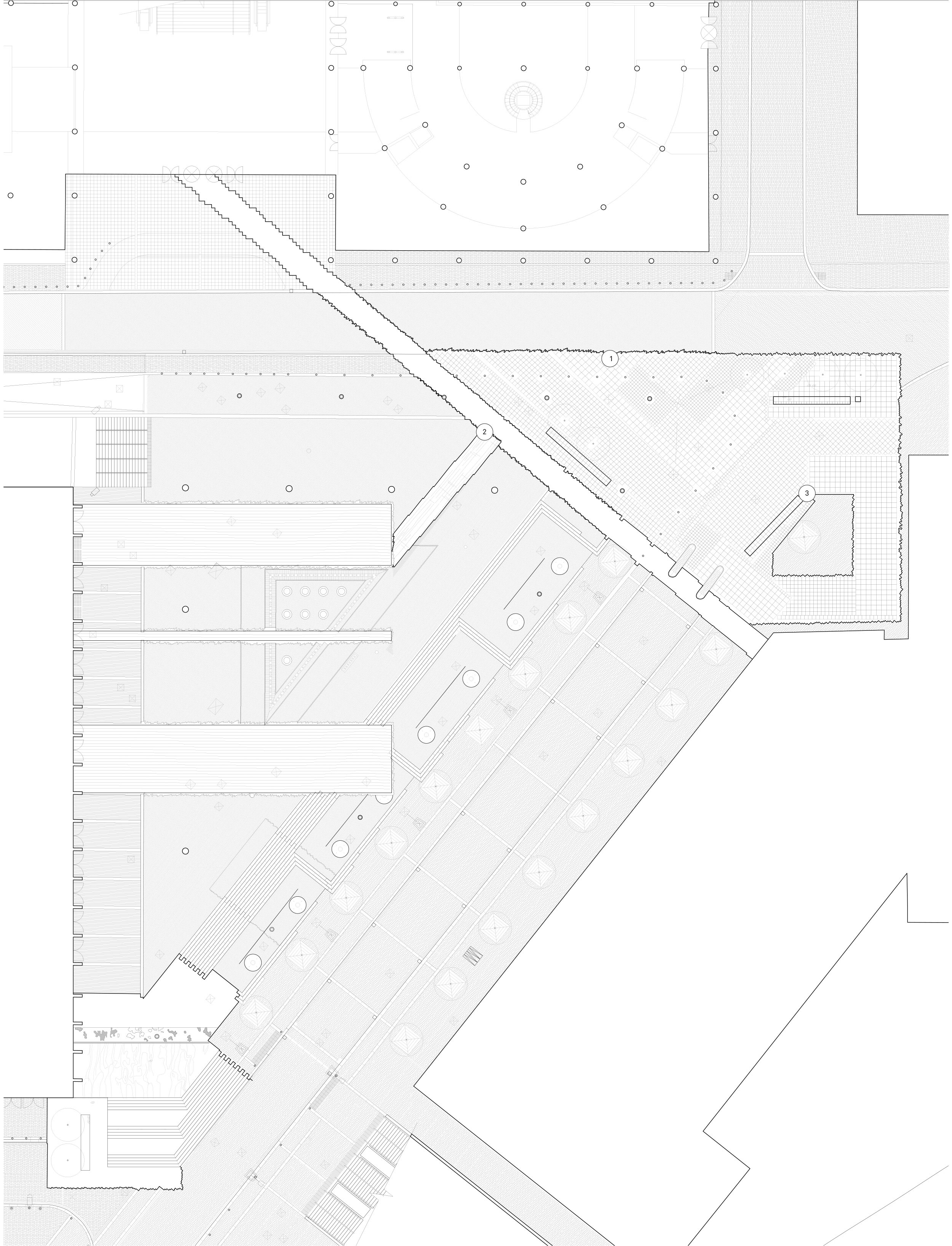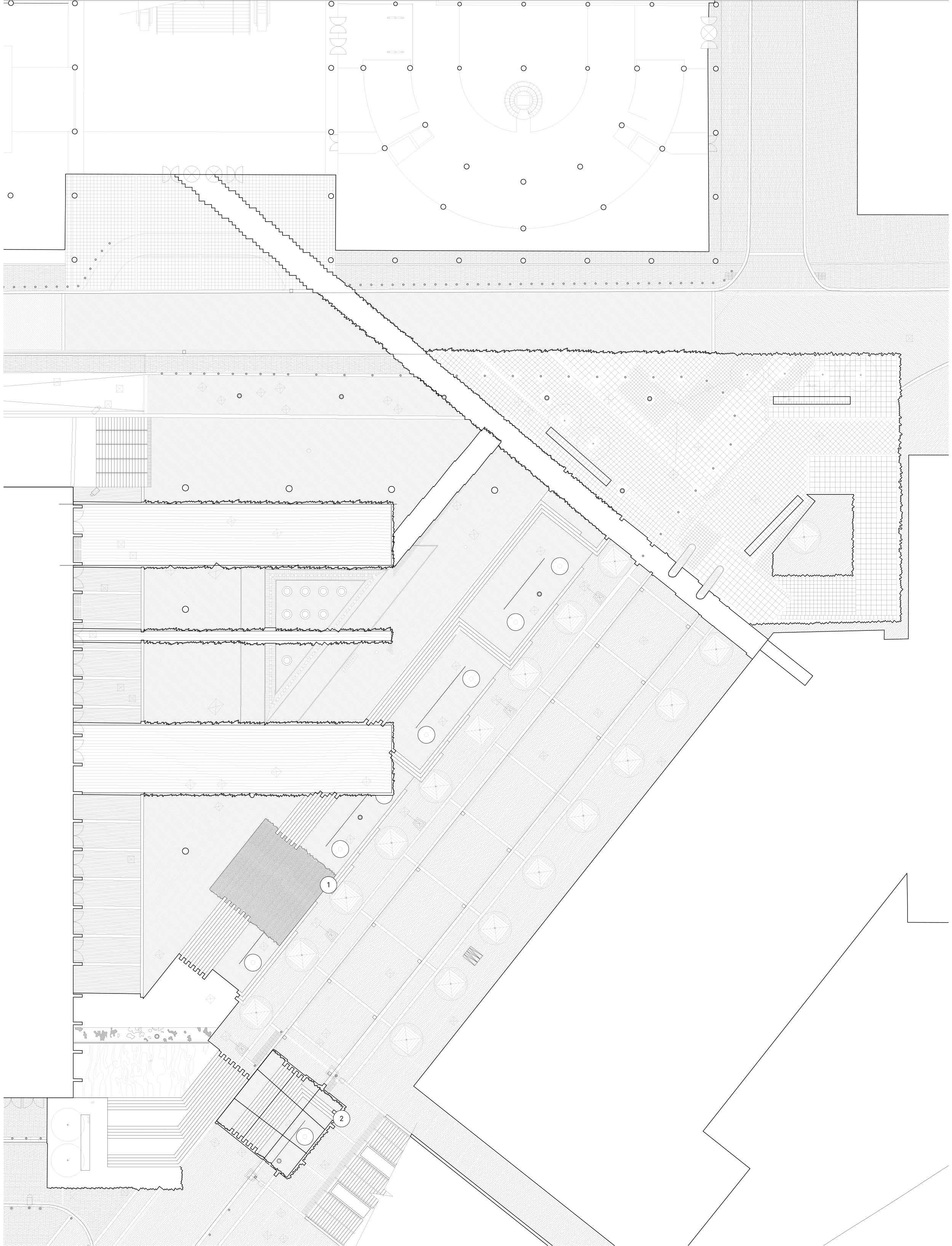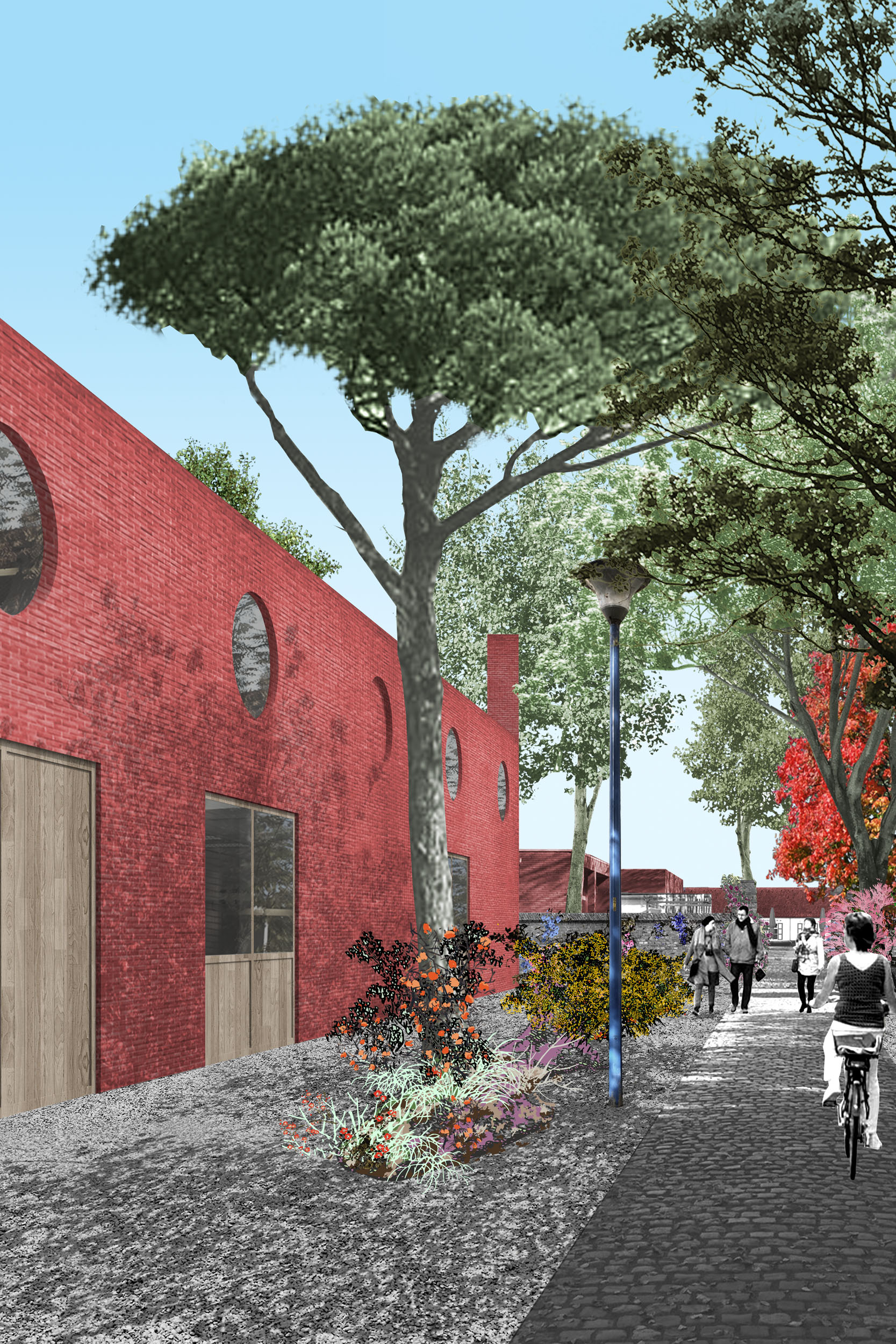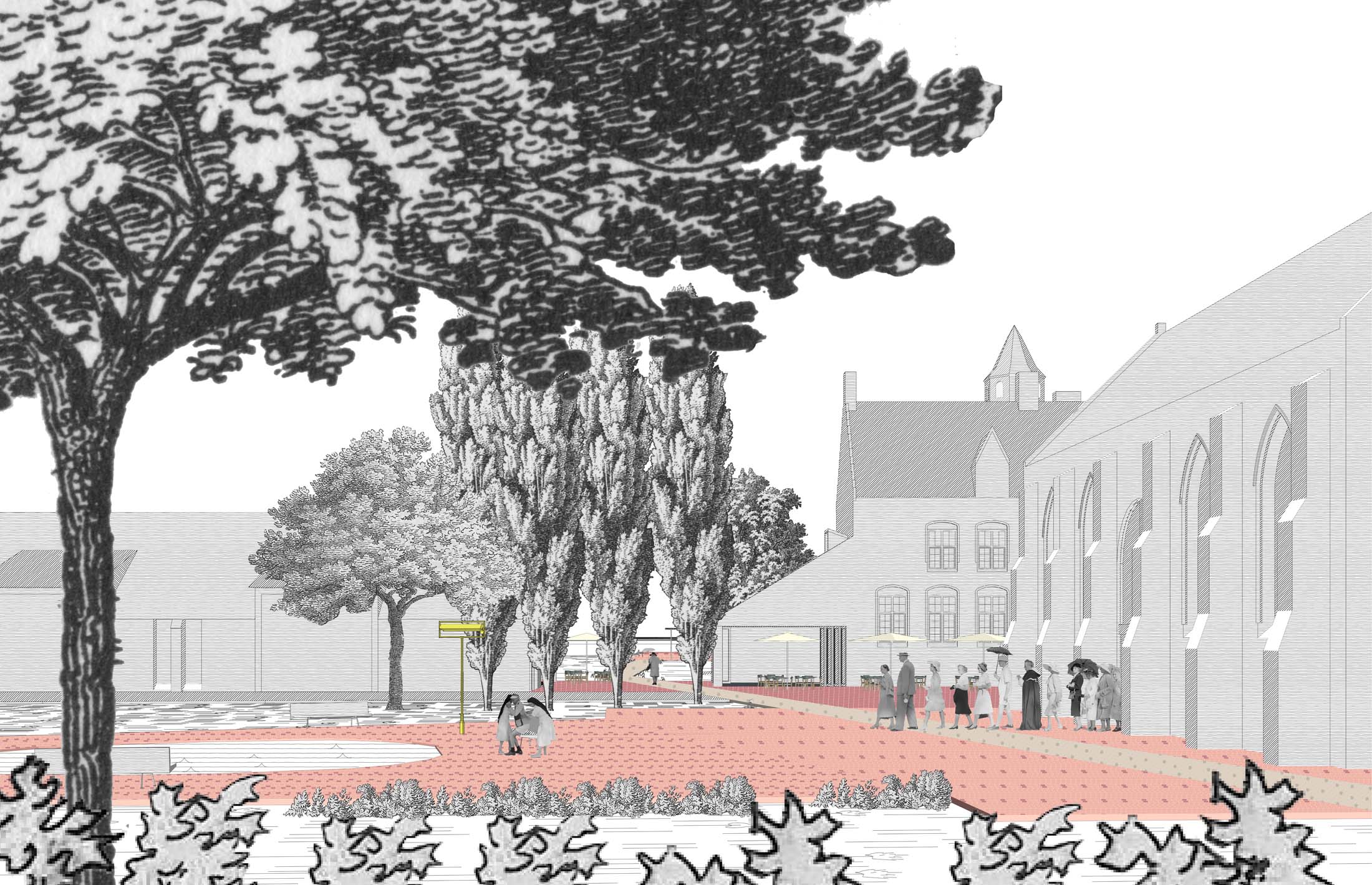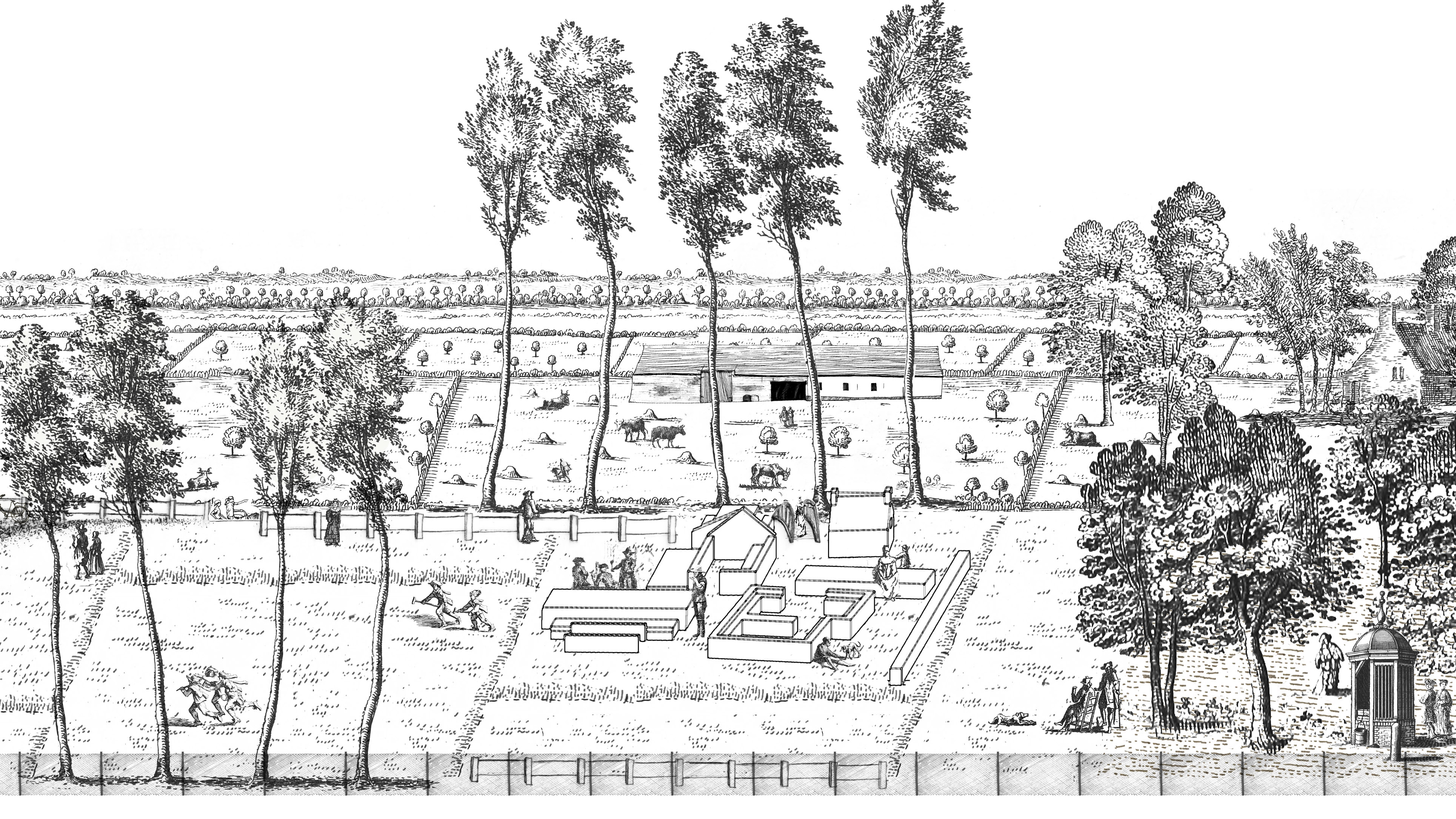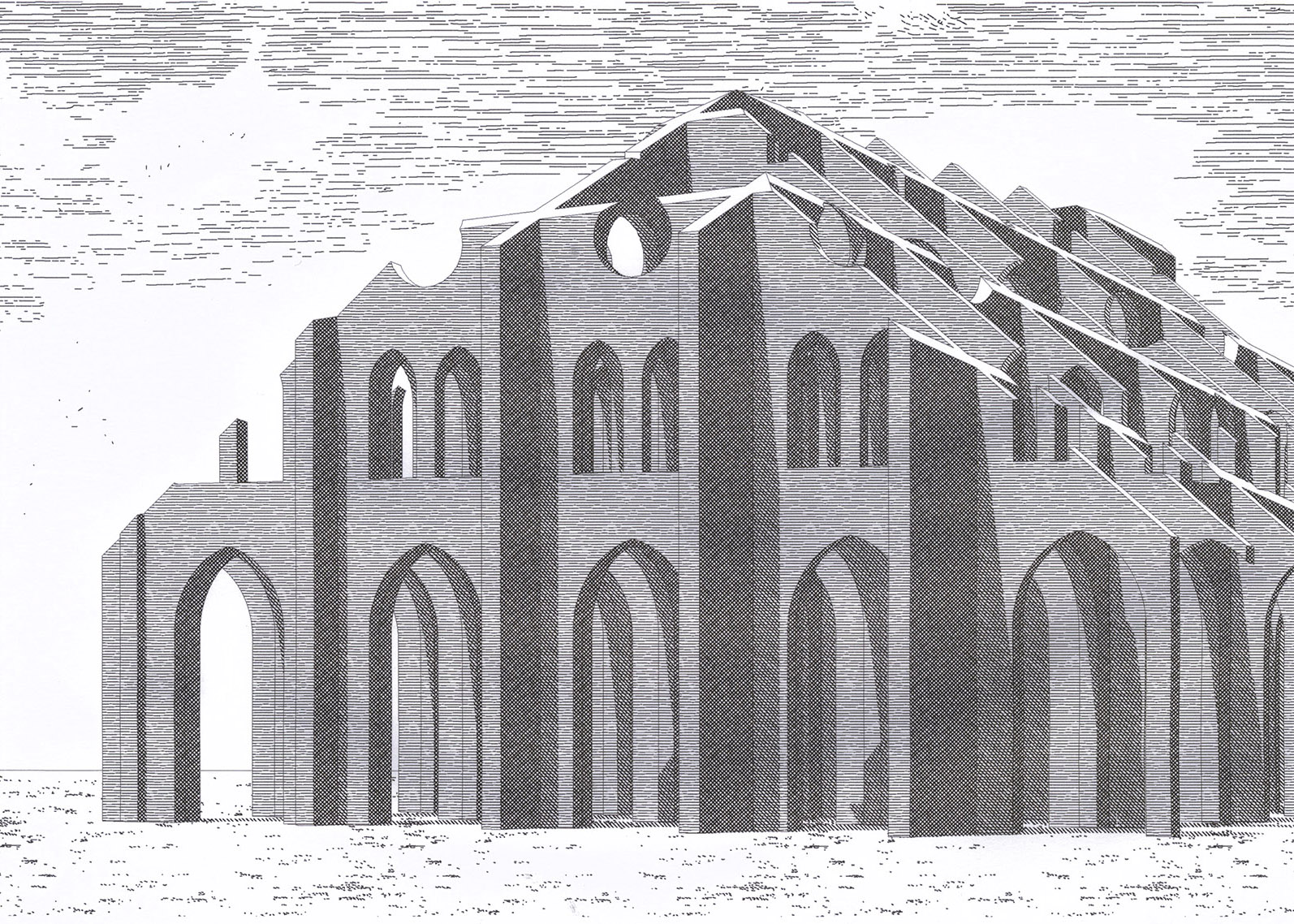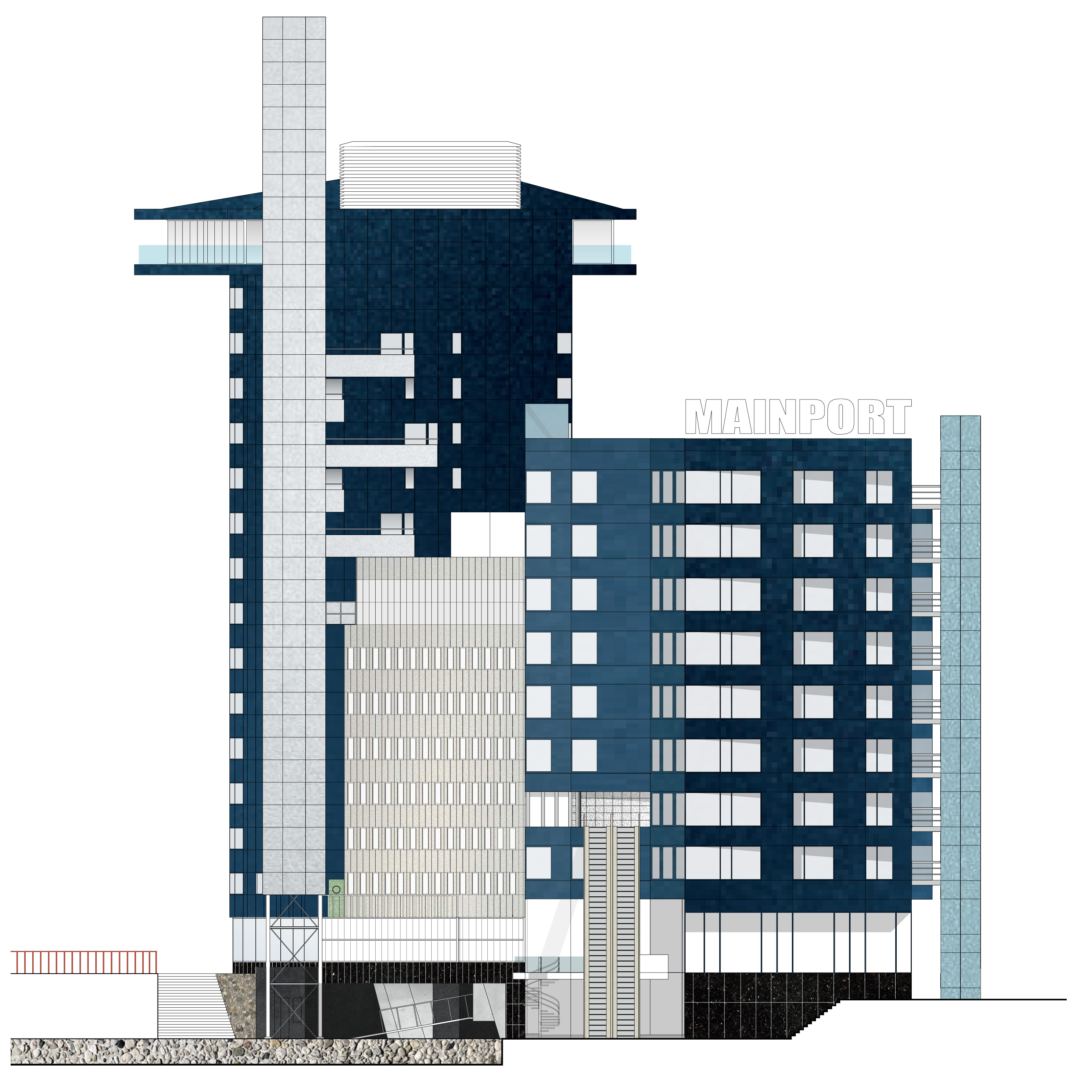AN INCIDENTAL MEETING OF PARTS
Jazmin Charalambous, TU Delft
In order to address the effects of a global neo-liberal economy, this project investigates how to subvert its corporate consequences on architecture and public space. It does so by considering the value of the ground surface in relation to two themes: theatrical principles and material effects. The first theme addresses the emancipating spatial impact of theatre, and the second addresses the visual and sensory aspects of materials. The project is situated in Wembley Park, London, where a new residential neighbourhood is being developed around a centre of mass-spectacle.
![Terrazzo pieces cast in-situ creating a filigree edge for the stencil-rolled concrete]()
![Study of terrazzo edge detail]()
![View across the surface during Phase 5, 2090]()
The rise of neo-liberalism prioritises architecture as object, whilst organising public space as an exercise in management. In Wembley Park, a large-scale redevelopment masterplan lying adjacent to a landmark stadium has produced a series of identikit zones that obliterate traces of the old, condition behaviour and eliminate potential crossovers between people. It pigeonholes citizens into the role of a passive consumer. This is what the director Peter Brook would describe as a ‘deadly theatre’ by not attempting to fully challenge and engage the audience. This project explores theatre as an institution that allows people to participate as actors in the present moment by creating an open design that can be completed in a multitude of ways. It questions how injecting theatrical principles into the ground surface can unlock the latent potential of a lifeless public square in the form of a carpet.
![Existing Arena Square, 2004-2019. The existing site is surrounded by 3 buildings, with Wembley Park Boulevard running through it, designed for cars but in fact a pedestrian street. Engineers Way to the north runs along the 92 bus route and is a low-medium traffic road. Vehicle access for Arena Square comes from this edge.]()
![Phase 1: The Arena Front, 2019-2034. The first phase is about connecting to the Arena by visually creating routes up to it as well as restoring its lost symmetry]()
![Phase 2: Wembley Library Terrace, 2034-2049. The second phase creates a visual connection between the Civic Centre, Library and the square by making a library terrace which acts as the gathering spot within the carpet.]()
![Phase 3: Stadium Hill, 2049-2064. This phase is about creating a visual connection to the stadium by creating a hill made from a piece of the old Arena Square]()
![Phase 4: W03 Terrace, 2064-2079. This phase is about connecting with the new retail-residential complex W03.]()
![Phase 5: Infill, 2079-2094. The final phase is about the infills and overlaps that join the carpet together]() The proposed Urban Carpet is produced as a series of five slow acts over the course of ninety years, which challenge and disrupt the developer’s managerial scheme. Intentional materials meet incidentally celebrating the multi-textured fabric of London. Instead of using a computer to mechanically calculate offsets to precision, the parts are allowed to meet incidentally, turning what could be banal and senseless into sensitive and fragile ‘between’ moments, materialised as blue frayed terrazzo edges. An alternative phasing strategy, new standardised materials, and revised construction techniques are the methods used to orchestrate encounters between people and place, creating a heterogeneous landscape that celebrates difference and possibility. The project explores how a seemingly basic or neutral architectural element, such as the floor, is in fact an extremely complex artefact, charged with significant cultural responsibility and playing a key role in human action and agency.
The proposed Urban Carpet is produced as a series of five slow acts over the course of ninety years, which challenge and disrupt the developer’s managerial scheme. Intentional materials meet incidentally celebrating the multi-textured fabric of London. Instead of using a computer to mechanically calculate offsets to precision, the parts are allowed to meet incidentally, turning what could be banal and senseless into sensitive and fragile ‘between’ moments, materialised as blue frayed terrazzo edges. An alternative phasing strategy, new standardised materials, and revised construction techniques are the methods used to orchestrate encounters between people and place, creating a heterogeneous landscape that celebrates difference and possibility. The project explores how a seemingly basic or neutral architectural element, such as the floor, is in fact an extremely complex artefact, charged with significant cultural responsibility and playing a key role in human action and agency.
![February 3rd, 2029: He takes a cigarette break whilst watching the blue granules pour out into a pile, meeting the eyes of another sustaining the same sensation, satisfied.]()
![April 11th, 2045: Along Engineers Way the new silent electric Routemaster glides across the edge of the carpet slowing down towards the crusted terrazzo curbstone that cuts across the road.]()
![June 5th, 2064: It’s a weekend and Jacksonville Jaguars are playing. Before the game, fans make a ritual procession across the carpet. The white hill becomes even more reflective as the sunlight shines onto it.]()
![August 28th, 2078: It’s a warm and muggy day. A solo guitar player performs on the slope. An impromptu performance in the middle of a heatwave.]()
![October 5th, 2096: They unite for the night to save what’s precious from the looming interests that lurk and peep.]()
STUDENT WORK: Jazmin Charalambous
TUTORS: Mark Pimlott, Jorge Mejia Hernandez, Marius Grootveld
YEAR: 2018
INSTITUTION: TU Delft



